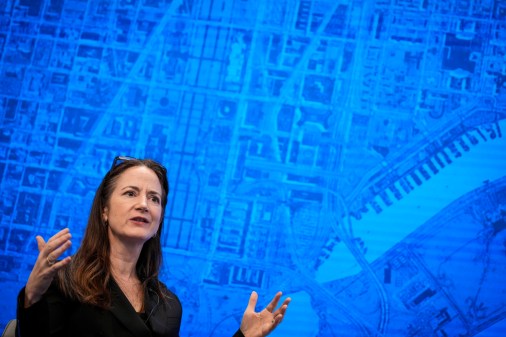Pentagon, DHS agree to framework for joint cyberdefense
The departments of Defense and Homeland Security have agreed to a framework that more clearly articulates the agencies’ roles and responsibilities in defending U.S. networks from advanced cyberthreats, officials told lawmakers Wednesday.
A joint memo recently signed by Defense Secretary James Mattis and Homeland Security Secretary Kirstjen Nielsen “is a major step forward in fostering closer cooperation and marks a sea change in the level of collaboration between our departments,” Kenneth Rapuano, an assistant secretary of Defense, said at House Armed Services subcommittee hearing.
Under the agreement, the departments will jointly prioritize a list of civilian assets that are critical to the U.S. military’s “ability to fight and win wars and project power,” and work to protect them, said Jeanette Manfra, DHS’s top cybersecurity official. That will shape a common understanding of threats at the agencies, which in turn can help the private and public sectors defend their networks, she added.
DHS will use its understanding of the domestic cyber risk landscape to inform Pentagon efforts to “preempt, defeat, and deter malicious cyber-activity outside the U.S. that is targeting our critical infrastructure,” Manfra added. The Pentagon will help DHS track adversaries and warn the private sector of looming threats.
The new agreement is already being implemented, Rapuano said, adding that an inter-agency group kicked off on Tuesday to “enhance the U.S. government’s readiness against cyberthreats.”
The synchronization of cyber policymaking in the government has been a work in progress as both the DHS and U.S. Cyber Command, a part of the Defense Department, mature their capabilities. U.S. officials have long touted their “whole-of-government approach” to cyberthreats, and the new memo advances that cause.
The most recent test of DOD-DHS collaboration was in defending the midterm elections from foreign information operations. Cyber Command reportedly targeted Russian operatives to try to deter them from meddling, while DHS worked with social media companies and election officials to combat disinformation.
“Midterm elections provided a real-world platform to showcase interdepartmental collaboration in cyberspace,” said Lt. Gen. B.J. Shwedo, the chief information officer of the Joint Chiefs of Staff.



